How to Hire Offshore AI Developers: A Complete Guide for Successful AI Projects
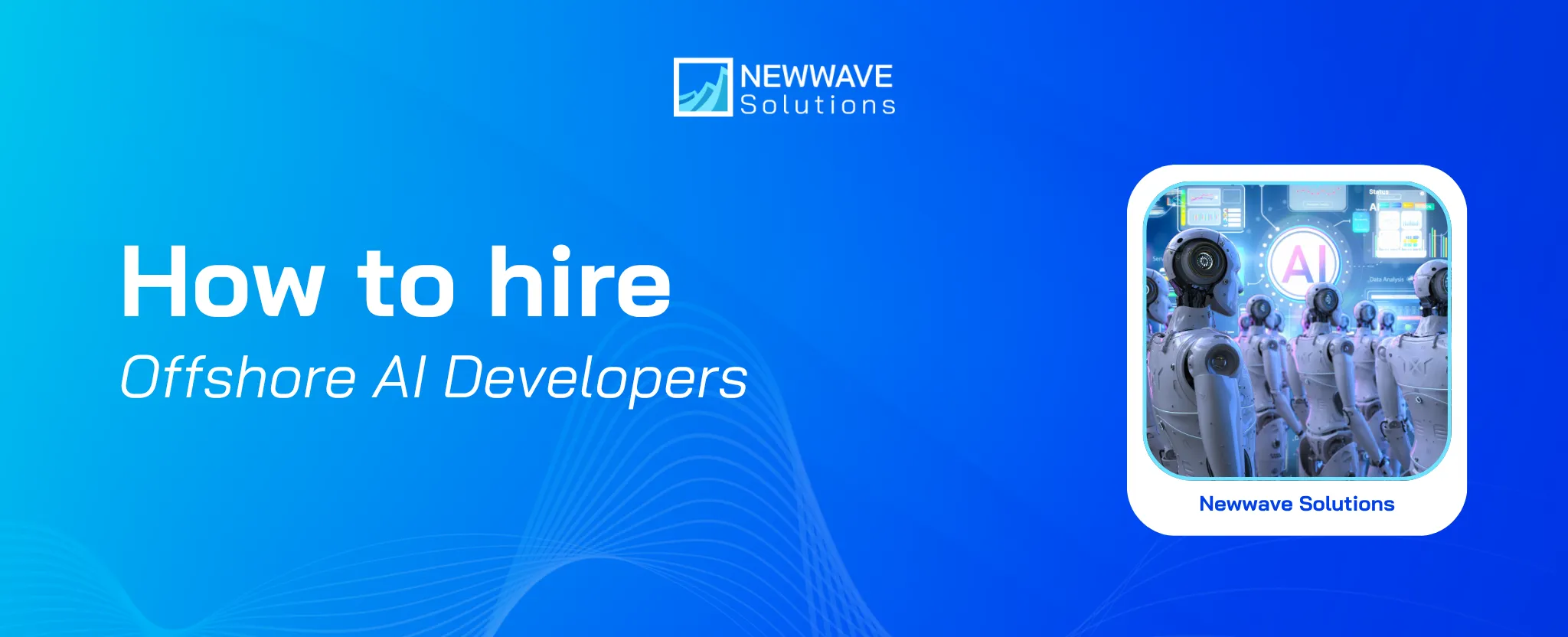
Artificial intelligence (AI) technology is more popular than ever, driving a growing demand for businesses to hire offshore AI developers. Offshore AI developers brings outstanding competitive advantages—from faster product launch times and access to cutting-edge technologies, to enhanced operational efficiency. This is a smart strategy that allows companies to optimize resources while maintaining their position in the global AI technology race. Join Newwave Solutions as we discuss how to successfully hire offshore AI developers and the key benefits of outsourcing this role.
What is an Offshore AI Developer?
An offshore AI developer (offshore Artificial Intelligence developer) is a software engineer or data specialist who works remotely from another country to build, deploy, and maintain AI-based systems. Meanwhile, the AI developer team is a group of skilled professionals responsible for developing intelligent software and applications. This team often includes offshore artificial intelligence developers from around the world who bring diverse expertise and cost-effective solutions. They work collaboratively with data scientists and other experts to ensure that development tasks are accomplished efficiently and projects are implemented correctly. These professionals work within global teams to deliver advanced solutions using technologies like:
- Natural Language Processing (NLP)
- Machine Learning (ML)
- Deep Learning
- Computer Vision
- Generative AI
Typically, an offshore artificial intelligence developer collaborates with data scientists, product managers, and engineers to create algorithms and intelligent software that solve real-world problems—such as predicting customer behavior, optimizing operations, or enabling automation. Working with offshore AI engineers allows businesses to leverage specialized skills while maintaining agility in scaling up or down based on project requirements. Many offshore teams include roles such as:
- AI Engineer / AI Solutions Architect – Designs scalable AI models and architecture.
- Machine Learning Engineer – Develops and trains ML algorithms for predictive insights.
- Data Scientist – Analyzes large datasets to identify patterns and trends.
- NLP Engineer – Builds natural language and conversational models.
- Generative AI Specialist – Develops AI models for image, text, or voice generation.
These roles work together to ensure end-to-end delivery of AI solutions that meet performance, accuracy, and compliance standards.
So why does your business need to hire offshore AI developers?
- Access global expertise – Tap into a worldwide pool of skilled AI professionals who bring diverse technical backgrounds and industry experience.
- Reduce costs – Offshore locations offer lower labor rates without compromising quality, helping businesses optimize budgets.
- Accelerate innovation – Continuous development across time zones enables faster product launches and shorter go-to-market cycles.
- Scale flexibly – Expand or contract teams depending on project needs, ensuring cost-effective resource management.
- Stay competitive – Offshore AI teams give companies access to emerging technologies and research that fuel next-generation innovation.
Step-by-step Process of Hiring Offshore AI Developers
Hiring offshore artificial intelligence developers requires careful planning and evaluation. Beyond cost, businesses must ensure technical competence, cultural fit, and project alignment. Here’s how to structure a seamless hiring process.
Before diving into each step, it’s essential to define clear project goals, determine the scope of work, and identify which AI technologies are required. Once your strategic objectives are in place, follow this structured process to find and collaborate effectively with offshore AI engineers:
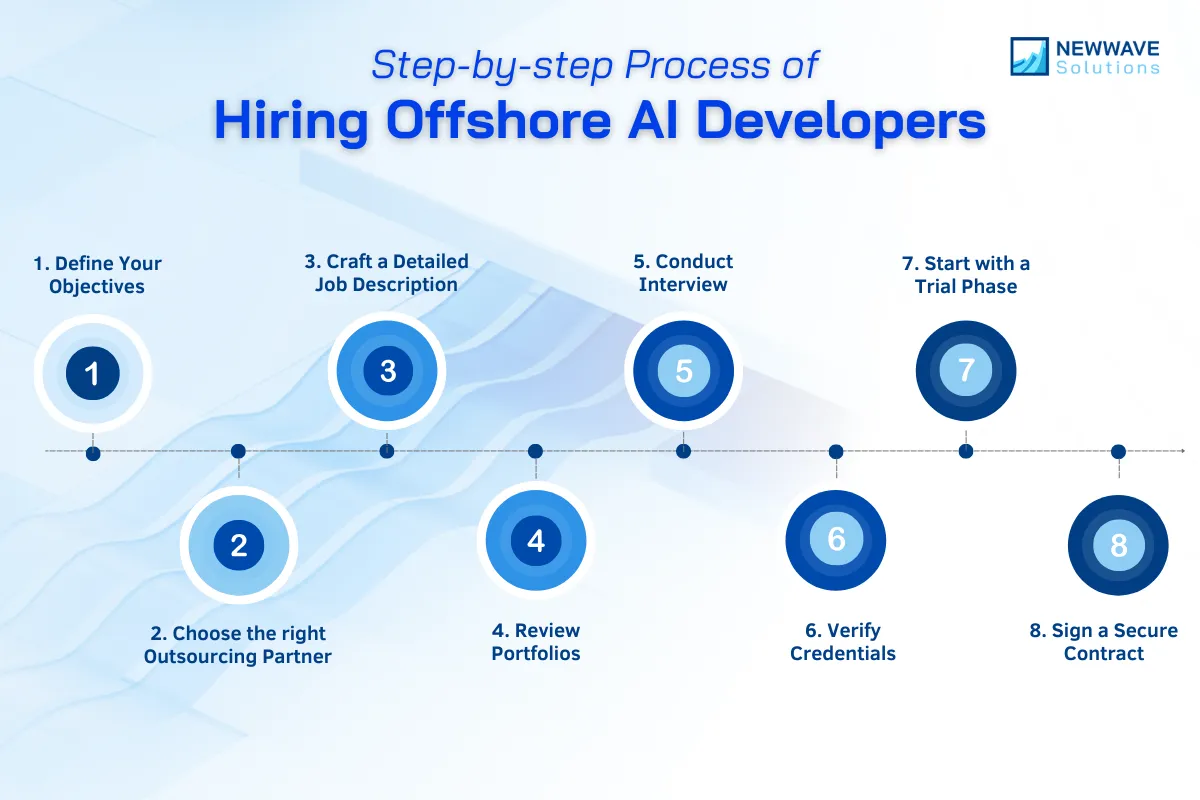
Step 1: Define Your Objectives
Before proceeding with hiring, outline your project scope. Determine which AI technologies are required, such as machine learning (ML), natural language processing (NLP), or generative AI. Having clear objectives will guide you toward choosing the best offshore artificial intelligence developers who possess the precise skills your project demands.
Step 2: Choose the Right Outsourcing Partner
Partnering with a reliable offshore AI development company reduces risk and ensures smoother execution. Evaluate vendors’ portfolios, case studies, and technology capabilities. Look for proven experience in IT outsourcing services, especially in AI-driven projects across industries.
Review independent ratings on platforms like Clutch or GoodFirms to verify credibility and previous client feedback.
Step 3: Craft a Detailed Job Description
A clear and specific job description saves time during recruitment. Outline the project type, technical requirements (e.g., TensorFlow, PyTorch, or OpenAI APIs), and expected outcomes. This helps offshore AI engineers understand your expectations from the beginning and ensures better alignment.
Step 4: Review Portfolios
Examine the portfolios of your shortlisted candidates. Assess the quality of their past AI projects to ensure that their expertise aligns with your project needs. Reviewing detailed case studies provides an understanding of how these offshore artificial intelligence developers have successfully tackled complex AI challenges.
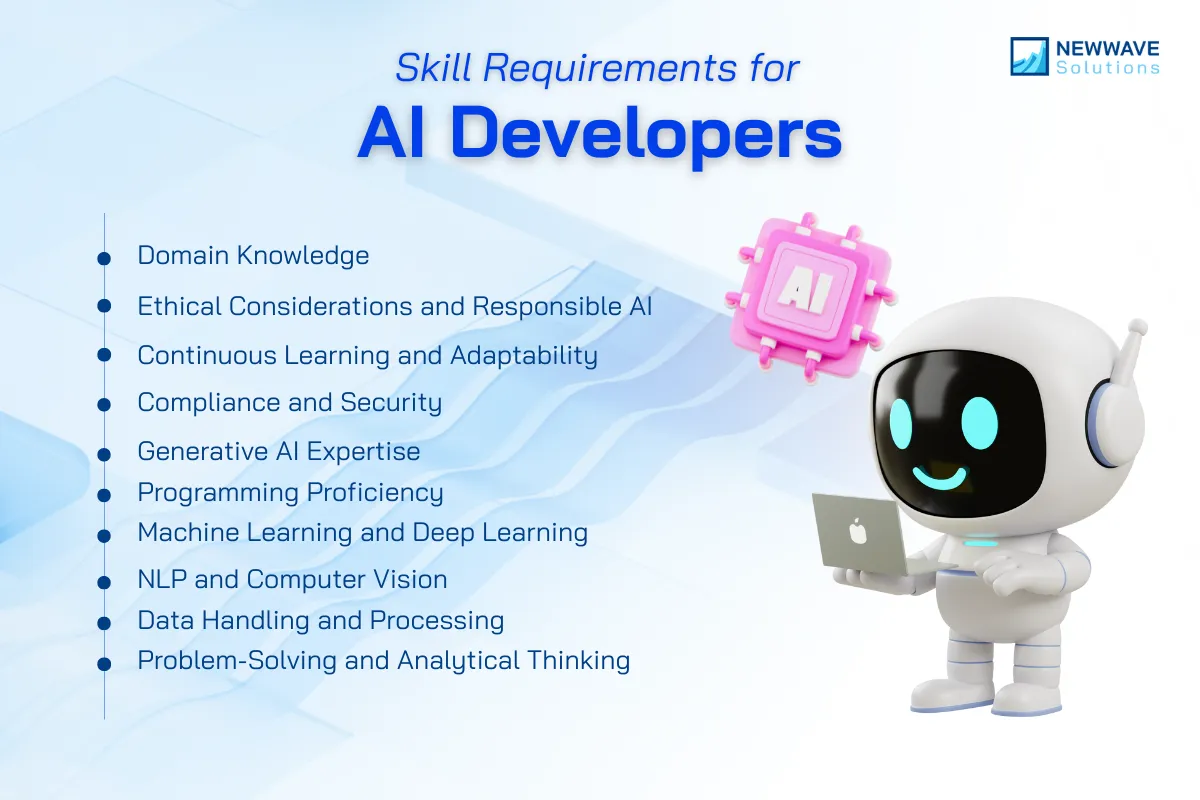
Step 5: Conduct Interviews
Once you narrow down your list, conduct interviews to assess both technical skills and team dynamics. Evaluate the candidates’ expertise in AI and their ability to communicate effectively. A good cultural and technical fit with the offshore ai developers will ensure smooth collaboration and project progress.
Step 6: Verify Credentials
Ensure you are hiring reliable experts by verifying their credentials. Check references and review previous projects to confirm their experience. Offshore artificial intelligence developers with a strong track record can deliver successful solutions that meet your project requirements and timelines.
Step 7: Start with a Trial Phase
After selecting the ideal candidate, a short trial project is an effective way to evaluate the team’s performance and compatibility. It allows both parties to assess workflow efficiency, communication, and technical delivery before committing to long-term contracts.
Step 8: Sign a Secure Contract
Once you’re satisfied, formalize the partnership with a contract that includes deliverables, timelines, and an NDA. This agreement safeguards your intellectual property and data while clarifying responsibilities between both teams.
By following these steps, you can confidently hire top-tier offshore AI developers capable of handling your AI-powered solutions and ensuring the success of your projects.
Which Offshore AI Developer Pricing Models Suit You Best?
Selecting the right pricing model is one of the most critical decisions when hiring offshore AI engineers. It directly impacts cost transparency, flexibility, project control, and overall efficiency. Each model fits specific business needs and project scopes—ranging from small prototypes to large-scale enterprise AI systems.
Below, we explore the most common pricing models for offshore artificial intelligence developers, including how they work, their advantages, and when each is best applied.
1. Fixed-Price Model
The Fixed-Price Model is the simplest and most predictable engagement type. Both parties agree on a set budget, scope, and timeline before the project begins. Once terms are finalized, the vendor is responsible for delivering the agreed-upon deliverables within those limits.
This model works best when the AI project’s objectives are clearly defined, such as developing a specific AI module, chatbot, or automation feature where requirements are unlikely to change midstream. It ensures financial predictability and straightforward project tracking, though it requires thorough planning upfront.
Suitable for:
- Small or medium projects with clearly defined deliverables
- Proof of concept (PoC), prototypes, or MVPs
- Businesses with limited budgets seeking predictable costs
Benefits:
- Transparent and pre-determined costs
- Minimal management effort once the contract starts
- Easier to track milestones and timelines
- Lower financial risk for clients
Challenges:
- Limited flexibility for scope adjustments after development starts
- May not suit projects involving research, innovation, or evolving objectives
- Requires comprehensive documentation before development begins
2. Time and Material Model
The Time and Material (T&M) Model provides flexibility by charging for actual time spent and resources used. Instead of a fixed budget, you pay based on hourly or daily rates for developers, data scientists, and project managers.
This model suits AI projects that require research, iterative development, or continuous refinement—such as model training, algorithm optimization, or integration of generative AI components. It allows teams to explore innovative directions as the project evolves, which is crucial in fast-moving AI environments.
Suitable for:
- Long-term projects with dynamic or evolving requirements
- R&D, prototyping, or AI model experimentation
- Businesses focusing on innovation and performance optimization
Benefits:
- High flexibility—adapt to new insights or scope changes easily
- Encourages experimentation and creativity in AI development
- Ideal for agile methodologies and continuous iteration
- Transparent tracking of hours and progress
Challenges:
- Cost can increase if the project expands unexpectedly
- Requires active client involvement in project management
- Difficult to estimate the final cost early on
3. Dedicated Team Model
The Dedicated Team Model involves hiring a full-time offshore team that works exclusively on your AI projects. The team operates as an extension of your in-house workforce, aligning with your workflows, communication channels, and development goals.
This model is particularly effective for businesses building AI systems that require continuous updates, long-term scalability, or deep domain expertise. It’s common among enterprises that want control and commitment without handling recruitment or HR overhead.
Suitable for:
- Large enterprises or tech companies with ongoing AI initiatives
- Businesses seeking a stable long-term partnership
- Complex AI products needing constant improvement or maintenance
Benefits:
- Full control over team composition and workload
- Long-term knowledge retention—your dedicated team gains deep project familiarity
- Seamless integration with internal teams and tools
- High productivity and accountability
Challenges:
- Requires initial time for onboarding and alignment
- Higher upfront costs compared to short-term contracts
- Needs strong leadership and project management
4. Hybrid Model
The Hybrid Model combines elements of fixed-price and time-and-material approaches. It’s perfect for projects that have both predictable and exploratory components. For example, the core system architecture might be priced as a fixed-cost component, while data model experimentation or integration phases follow a flexible T&M arrangement.
This model balances cost control with innovation freedom, making it ideal for mid-sized projects that evolve over time or when business goals may shift during execution.
Suitable for:
- Projects with both stable and evolving components
- Businesses exploring new AI capabilities while managing budgets
- Teams working in agile environments with phased deliverables
Benefits:
- Combines financial control with development flexibility
- Enables faster delivery through parallel fixed and experimental tracks
- Reduces risk by isolating uncertain components into T&M scope
- Promotes iterative innovation without losing budget visibility
Challenges:
- Requires clear segmentation between fixed and variable scopes
- Needs experienced project management to balance both streams
- May increase coordination complexity across teams
Overall for you best choice, selecting the optimal pricing structure depends on your organization’s goals, project size, and internal capacity for management:
- If your project has strict deadlines and fixed deliverables, choose the Fixed-Price Model.
- If you value flexibility and continuous improvement, the Time and Material Model is best.
- For long-term partnerships and full control, adopt the Dedicated Team Model.
- If your project blends stability and innovation, the Hybrid Model provides a balanced solution.
The right model not only affects budget efficiency but also defines how effectively your offshore AI development team collaborates, scales, and innovates with you.
Pros and Cons of Using Offshore AI Development Teams
Offshoring AI development, particularly by leveraging offshore artificial intelligence developers, has become increasingly popular with companies aiming to scale up while keeping costs lower. This approach offers several advantages and some challenges that need to be considered. Understanding these will help you decide to hire offshore artificial intelligence developers successfully:
Pros
1. Cost Efficiency and Resource Optimization
Hiring offshore artificial intelligence developers significantly reduces operational expenses. Labor costs in leading offshore destinations like Vietnam, India, or Eastern Europe can be 40–60% lower than in North America or Western Europe. This allows companies to allocate more budget to innovation, infrastructure, or marketing rather than payroll.
Additionally, outsourcing eliminates recruitment costs, onboarding delays, and office maintenance. You gain immediate access to a fully equipped, experienced team — ready to start without months of hiring effort.
Key advantages:
- Lower development costs without compromising quality
- Reduced HR and operational overhead
- Flexible scaling (up or down) based on workload
2. Access to Global Expertise and Emerging Technologies
Offshore AI teams often specialize in specific technologies such as natural language processing (NLP), deep learning, and generative AI. Many countries invest heavily in STEM education and AI research, making them global talent hubs.
By working with an offshore AI engineer or data scientist trained in cutting-edge technologies, your organization gains access to innovative tools, frameworks, and research that may not yet be mainstream in your region.
Key advantages:
- Broader technical skillset and domain expertise
- Exposure to new frameworks, languages, and methods
- Faster adaptation to global AI trends and standards
3. Faster Time-to-Market
Time zone diversity can become an advantage when managed correctly. With teams distributed globally, work continues around the clock. For example, while your local team sleeps, your offshore developers complete the next set of tasks, accelerating delivery timelines.
This model is especially beneficial for AI development, where iteration, testing, and retraining cycles are continuous. Offshore AI engineers ensure that model optimization, data labeling, and integration happen faster, allowing you to release and improve your product sooner.
Key advantages:
- Continuous 24/7 development cycles
- Faster product iteration and deployment
- Greater responsiveness to changing market demands
4. Scalability and Flexibility
Offshore partnerships provide the freedom to expand or reduce team size based on real-time project requirements. Whether you need a temporary team of machine learning experts or long-term collaboration for full AI product development, scaling becomes seamless and cost-effective.
This flexibility is crucial for startups and enterprises experimenting with new AI solutions while managing budgets strategically.
Key advantages:
- Quick ramp-up or ramp-down of resources
- Adaptability to market and business changes
- Agile response to evolving project needs
5. Diversity-Driven Innovation
Working with offshore artificial intelligence developers introduces diverse thinking, cultural perspectives, and creative problem-solving. Different backgrounds often lead to unconventional yet effective solutions—especially in AI, where innovation thrives on experimentation and new viewpoints.
Cross-border collaboration encourages adaptability, empathy, and curiosity—traits that drive long-term innovation and competitiveness.
Key advantages:
- Broader innovation pool
- Creative problem-solving approaches
- Exposure to international business perspectives
Cons
1. Time Zone and Communication Challenges
Time zone differences, though beneficial for 24/7 productivity, can create scheduling conflicts and communication delays. Misaligned work hours may slow feedback loops or decision-making.
To mitigate this, it’s essential to establish overlapping working hours, define clear communication protocols, and use collaboration tools (Slack, Jira, Microsoft Teams) effectively.
Potential risks:
- Missed updates or slow issue resolution
- Reduced real-time collaboration
- Misunderstandings due to asynchronous communication
Mitigation strategies:
- Use shared dashboards and daily standups
- Align milestones to ensure accountability
- Create documentation hubs for transparency
2. Quality Control and Oversight
Offshore AI projects require strong quality assurance and management oversight. Differences in coding standards, testing methods, or documentation styles can affect consistency.
Without clear governance, the final product might not meet your internal quality benchmarks or regulatory expectations. Businesses must invest in regular code reviews, sprint evaluations, and dedicated QA checkpoints to maintain excellence.
Potential risks:
- Inconsistent code or model performance
- Gaps in documentation and testing
- Lower accountability in loosely managed teams
Mitigation strategies:
- Establish a QA framework with measurable KPIs
- Schedule regular sprint demos and progress reviews
- Use centralized project management platforms
3. Cultural and Language Barriers
Cultural nuances can impact collaboration. Work ethics, communication styles, or decision-making approaches may differ from your local norms. For instance, some cultures may hesitate to challenge opinions or ask clarifying questions, leading to misunderstandings.
Language barriers, though increasingly rare, can still affect precision in technical discussions, especially around AI models, data handling, or compliance terms.
Potential risks:
- Misinterpretation of requirements
- Slower team bonding and trust-building
- Variations in communication tone or feedback style
Mitigation strategies:
- Provide onboarding sessions on cultural alignment
- Encourage open feedback culture
- Assign bilingual project leads when needed
4. Data Security and Compliance Risks
AI development involves handling sensitive datasets, including customer information, financial transactions, or healthcare records. When working with offshore partners, ensuring compliance with regulations such as GDPR, HIPAA, or ISO standards is critical.
Failure to manage access controls, encryption, or NDA enforcement could expose your organization to data breaches or legal liabilities.
Potential risks:
- Unauthorized data access or loss
- Non-compliance with industry regulations
- Reputational damage from breaches
Mitigation strategies:
- Sign detailed NDAs and data-handling agreements
- Choose vendors certified in information security (e.g., ISO 27001)
- Enforce encrypted data exchange and limited-access policies
5. Dependency on External Partners
Long-term reliance on an offshore team can lead to knowledge concentration outside your organization. If not managed properly, losing a vendor or team could disrupt ongoing projects or reduce your internal capability to maintain AI systems.
To mitigate this, create thorough documentation, cross-train internal staff, and implement a transition plan for key knowledge areas.
Potential risks:
- Overdependence on external expertise
- Loss of internal technical ownership
- Disruption during vendor transitions
Mitigation strategies:
- Maintain shared repositories and documentation
- Regularly rotate team members or hybridize roles
- Build internal AI champions for long-term sustainability
Tips to Hire Offshore AI Developers Successfully
Hiring offshore AI developers goes beyond contracts, it’s about building a sustainable and productive relationship. You need, however, to think about how to go about it so that you maximize the benefits. The following are some practical tips to guide you in the successful hiring and management of offshore AI developers:
- Evaluate ROI – Focus on the balance between cost and capability, ensuring every dollar spent translates into measurable business value and high-performing AI outcomes.
- Look for Real AI Experts – Hire developers with proven experience in ML, NLP, and computer vision to ensure your solution is both technically strong and commercially relevant.
- Partner with Specialized AI Outsourcing Companies – Work with firms dedicated to AI development to gain access to structured processes, expert teams, and reliable delivery standards.
- Ensure Alignment – Set clear goals, KPIs, and communication frameworks from the start to keep offshore developers fully aligned with your strategic objectives.
- Conduct a Trial Period – Begin with a short pilot project to validate technical skills, collaboration efficiency, and compatibility with your in-house team.
- Define Roles Clearly – Assign well-defined responsibilities early to eliminate task overlap, accelerate workflows, and improve accountability.
- Establish Project Management Frameworks – Use platforms like Jira or Asana to maintain transparency, track progress, and ensure timely delivery across distributed teams.
- Maintain Regular Communication – Hold consistent check-ins and progress updates to stay informed, resolve issues quickly, and maintain project momentum.
- Monitor Performance and Quality – Conduct periodic reviews and testing to guarantee that output meets quality benchmarks and long-term system reliability.
This being said, consider these few tips next time when hiring AI development teams and leverage the power of offshore developers to develop something innovative and effective within AI-powered solutions without ever compromising on the efficiency or performance of the project.
Best Countries to Build an Offshore AI Development Team
When building an offshore AI development team, it’s crucial to consider the right location to access top-tier talent while staying within budget and meeting project requirements. Here are the best countries for hiring offshore AI developers for your consider:
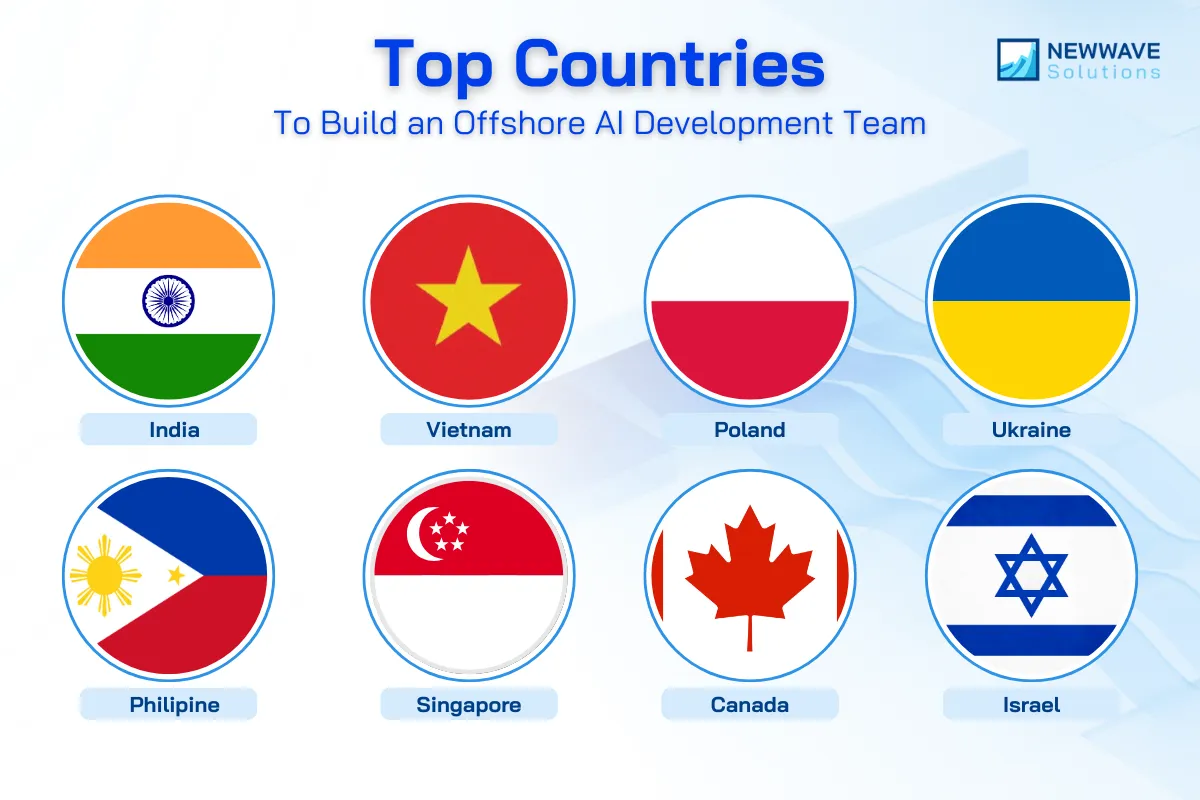
- India – A global IT hub with deep expertise in machine learning, data science, and NLP. Offers a vast talent pool at competitive rates.
- Vietnam – A fast-growing offshore market with developers skilled in Python, Java, and .NET. Competitive rates and strong government support make it an ideal destination for offshore software development services.
- Poland – Recognized for strong technical education and experience in enterprise AI solutions. Excellent English proficiency and cultural alignment with Western markets.
- Ukraine – Home to many experienced engineers with advanced skills in computer vision and predictive analytics. Offers excellent value for mid-size to large AI projects.
- Philippines – Rapidly emerging in AI and data annotation, with cost-efficient labor and a Westernized business culture.
- Singapore – A strategic hub in Southeast Asia with advanced AI research institutions and strong data governance frameworks.
- Canada – Known for cutting-edge AI research, especially in deep learning and generative AI, supported by robust R&D investments.
- Israel – High concentration of AI startups focused on cybersecurity, NLP, and predictive modeling. Excellent for innovation-driven partnerships.
When choosing a location, consider factors like English proficiency, infrastructure maturity, government incentives, and time zone compatibility to ensure seamless collaboration.
Why Choose Newwave Solutions for Your Offshore AI Developer Team?
At Newwave Solutions, we understand that hiring the right offshore AI team is more than just filling technical roles—it’s about building partnerships that drive long-term digital transformation.
With over a decade of experience delivering IT outsourcing industry and dedicated team base in Vietnam, we’ve helped global clients implement intelligent, data-driven solutions that streamline operations, improve decision-making, and unlock innovation. Our offshore AI engineers and developers specialize in building scalable, secure, and high-performance AI applications tailored to diverse industries.
Here’s why you should choose our hire offshore developer solutions:
- Comprehensive expertise – From machine learning and deep learning to generative AI, we cover the full AI development lifecycle.
- Flexible engagement models – Choose from dedicated teams, time-based contracts, or hybrid models suited to your business needs.
- End-to-end delivery – We handle everything—from AI strategy consulting and model training to deployment and post-launch optimization.
- Data privacy assurance – All projects are managed under strict NDA agreements and international data security standards.
- Global delivery excellence – Our teams in Vietnam and across Asia deliver world-class quality at competitive rates.
By choosing us, you gain a trusted partner who combines technical excellence with deep business understanding. Whether you’re exploring onshore outsourcing for regulatory reasons or looking to scale through offshore collaboration, we ensure your AI initiatives succeed from concept to completion.
Partner with Newwave Solutions today to unlock the full potential of AI through our world-class offshore software development services and expert offshore development teams.
Final Thought
Offshoring AI development enables you to tap into the best minds around the world, reducing costs speeding up timelines for AI projects, and developing AI solutions quickly and effectively. Successful collaboration with offshore AI teams relies on clear communication and defined roles. Make sure to align on project requirements early to ensure smooth progress.
For high-quality AI development services, you could consider Newwave Solutions. Our expert team ensures cost-effective and timely delivery of your AI projects. We’re ready to help you make that transformation, efficiently, securely, and intelligently.
To Quang Duy is the CEO of Newwave Solutions, a leading Vietnamese software company. He is recognized as a standout technology consultant. Connect with him on LinkedIn and Twitter.

Read More Guides
Get stories in your inbox twice a month.
Let’s Connect
Let us know what you need, and out professionals will collaborate with you to find a solution that enables growth.
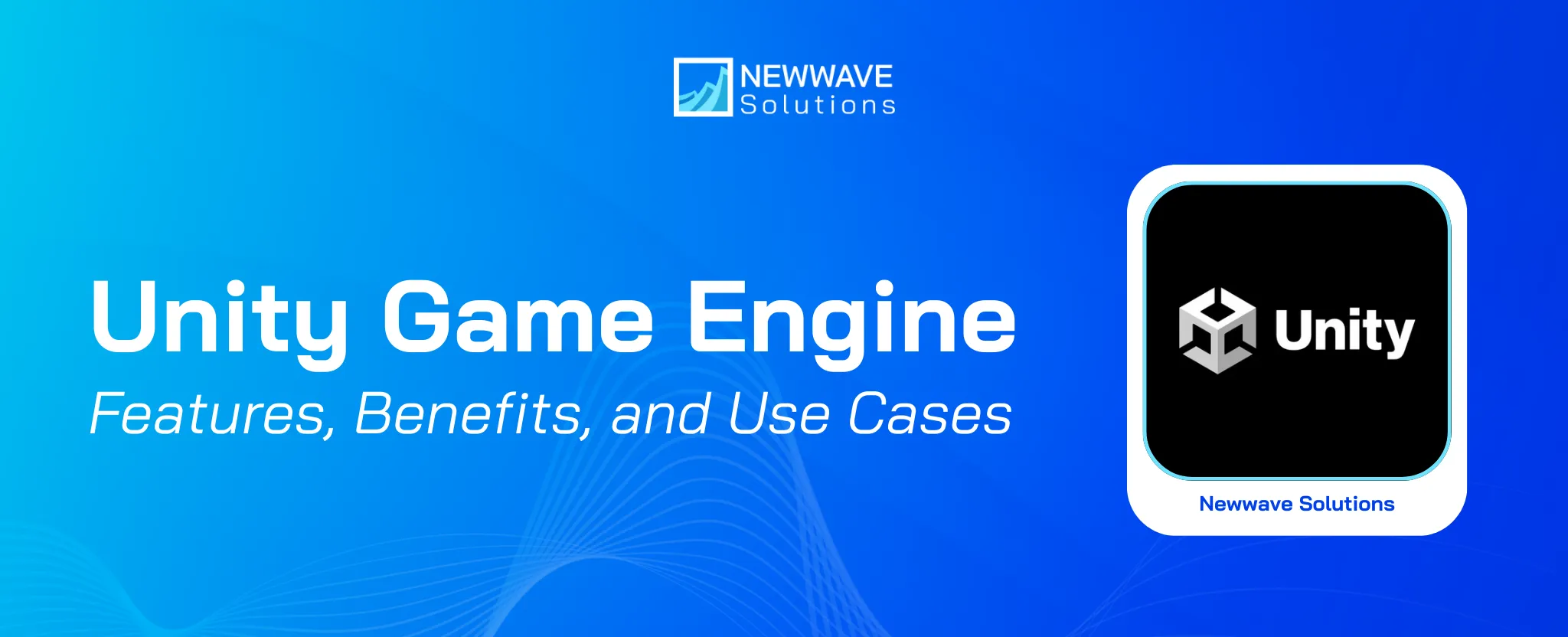
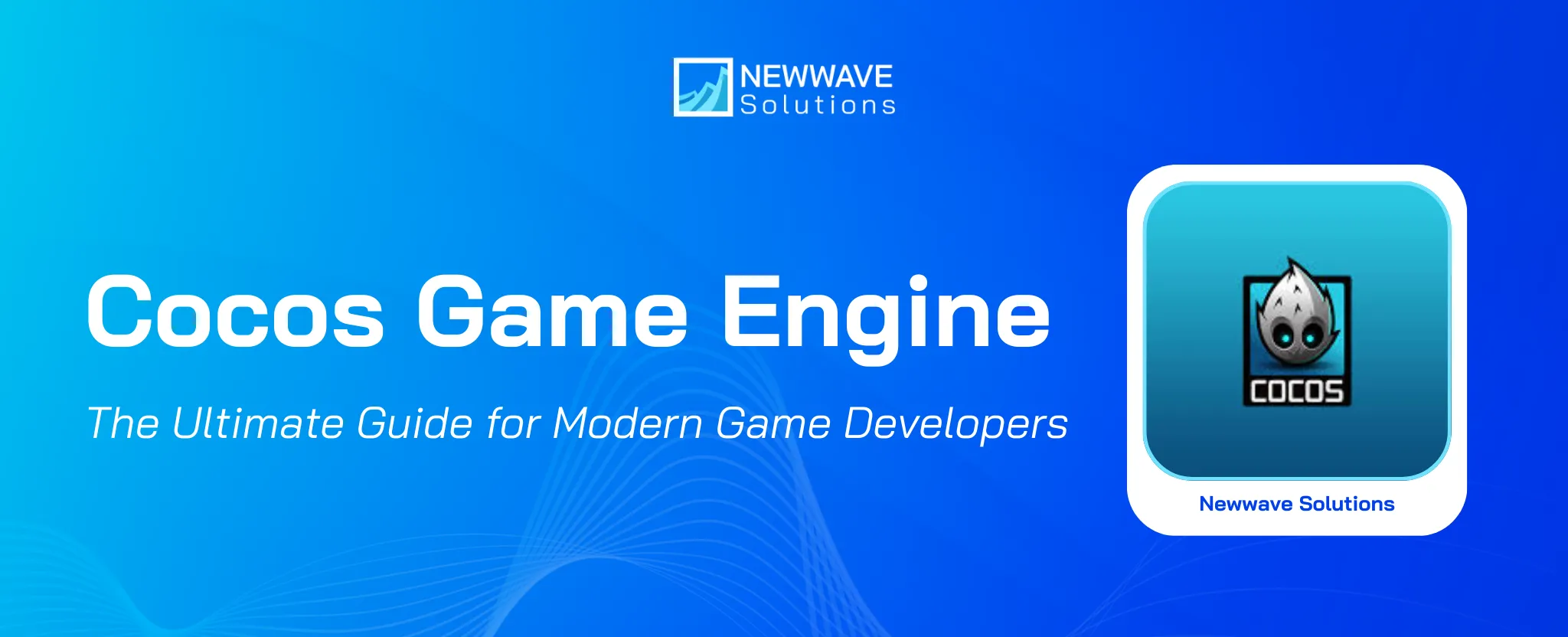
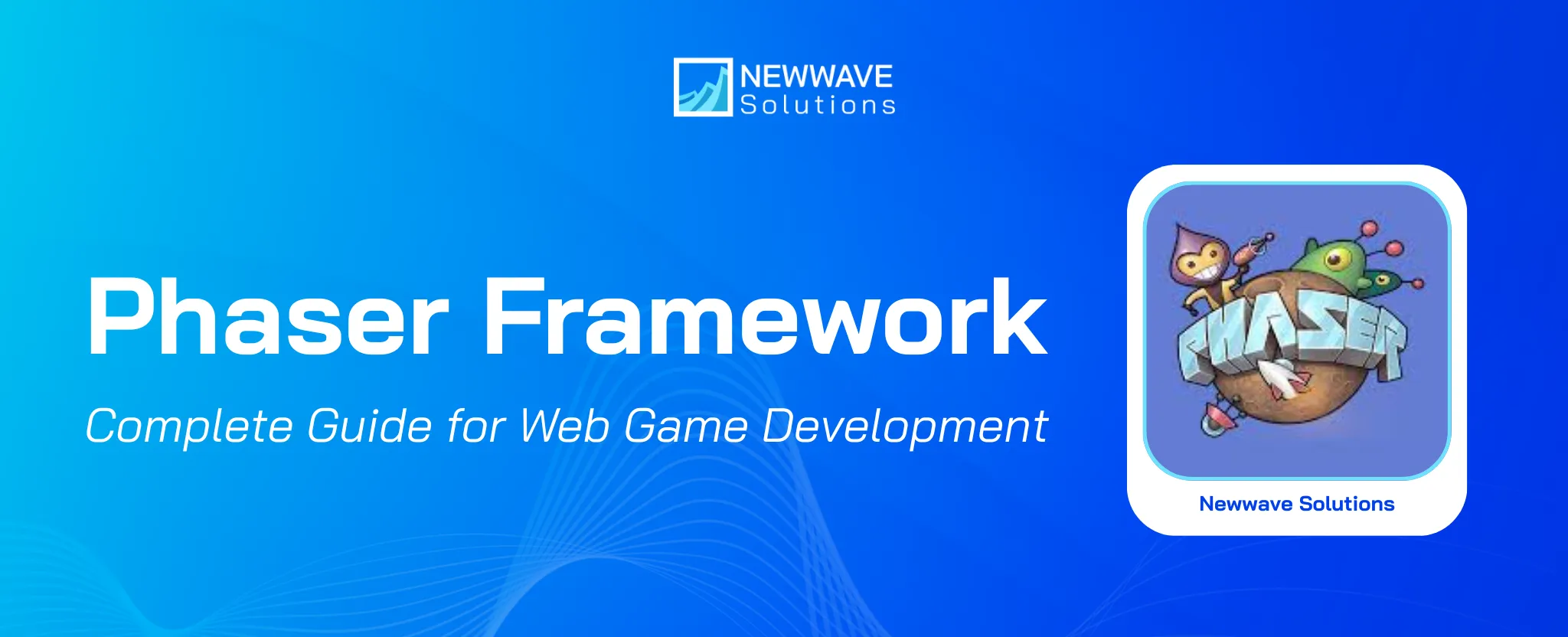
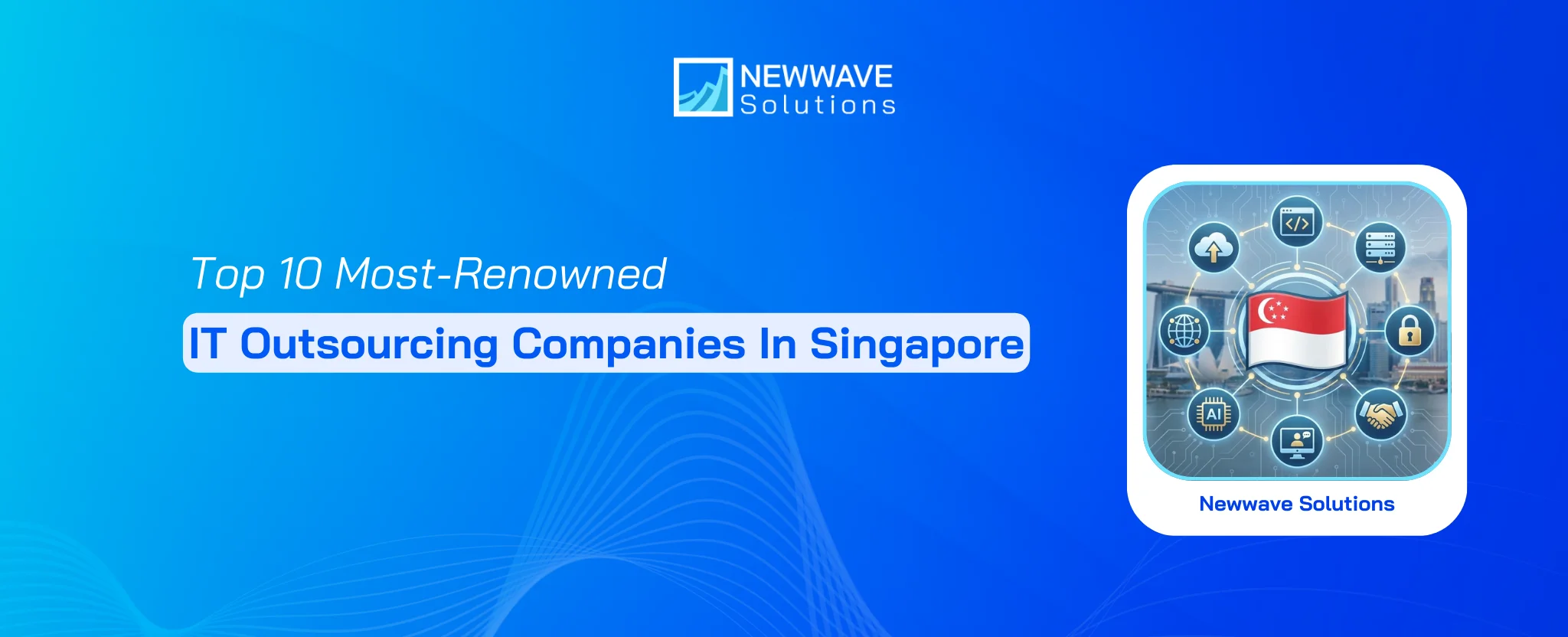
Leave a Reply